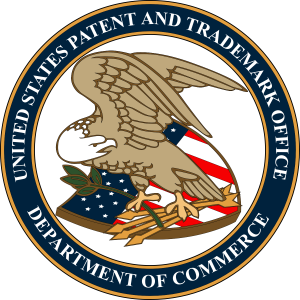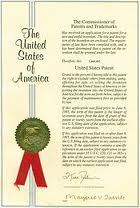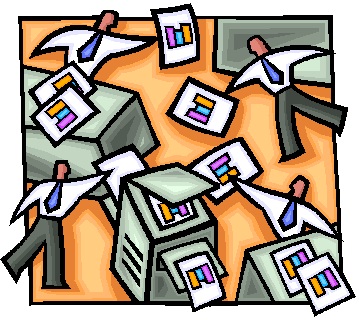 The President’s January 23, 2017, executive memorandum implemented a federal hiring freeze. The U.S. Patent and Trademark Office (USPTO) is one of those agencies affected by the President’s memorandum. While such a hiring freeze may not have an immediate impact on patent application pendency and/or examination quality, due to the relatively high attrition rate of the patent examining corps, the examination timeline and quality may be affected in the future. In particular, technologies having greater upfront value, including internet-based technologies and platforms, and clients relying on patent portfolios for valuation will be most acutely impacted. As illustrated below, the pendency backlog may inevitably increase and the examination quality suffer.
The President’s January 23, 2017, executive memorandum implemented a federal hiring freeze. The U.S. Patent and Trademark Office (USPTO) is one of those agencies affected by the President’s memorandum. While such a hiring freeze may not have an immediate impact on patent application pendency and/or examination quality, due to the relatively high attrition rate of the patent examining corps, the examination timeline and quality may be affected in the future. In particular, technologies having greater upfront value, including internet-based technologies and platforms, and clients relying on patent portfolios for valuation will be most acutely impacted. As illustrated below, the pendency backlog may inevitably increase and the examination quality suffer.
Articles Posted in Patents
Patent Seekers for Card Games Get Dealt a Bad Hand
The U.S. Patent Office has long granted patents on new card games, but the path for patenting card games was narrowed by a Federal Circuit ruling last Thursday. In In Re Smith, the Federal Circuit Court ruled that patent claims on a new card game were ineligible for patent protection, even if the card game is novel and non-obvious. The court did acknowledge, though, that some card games are potentially patentable if they satisfy certain criteria.
News of Note for the Internet-Minded – 12/10/15
Stories of interest this week include Google’s quantum computer (and bucket-load of patents), an AR-based visual browser, concerns over spying and toys, and more.
Shielding Your Patent from “Abstract” Reasoning
Patents related to games are facing new challenges for being too “abstract,” but a recent court ruling highlights the limits to this line of attack. Last year, the Supreme Court reinvigorated a body of law that defines the types of inventions eligible for patent protection. Generally, inventions deemed “abstract” are ineligible for patenting, unless there is some other inventive concept in how the invention is implemented. Defendants accused of infringing game-related patents have seized on this body of law to challenge issued patents as being mistakenly granted. But in these challenges, what counts as “abstract” has been subject to much debate. So new court rulings on patent eligibility of interactive-entertainment technologies are worth noting. A recent decision should comfort game-patent owners.
Apple Adds Force Touch to the iPhone: A Peek at Pop(ular) Patented Gestures
At the recent Apple iPhone unveiling event, we learned that you can Peek at it with a light press on your iPhone screen and Pop into it by pressing a little deeper. And just like that, Apple unleashed a new namespace of gestures distinguished by different amounts of force applied by the users. Developers will soon create 3D input gestures characterized both by where a user’s finger moves on screen and by how hard the user presses. For instance, you might scroll faster through your contact list based on how hard you press while drawing your finger across the screen, or control the speed of your virtual racecar based on the amount of force you apply. If history is any guide, expect savvy businesses to lay claim to the 3D gesture space with intellectual property.
Act Now
Prevent a Loss of Patent Rights when the U.S. Changes to a “First-Inventor-to-File” System on March 16, 2013
 One of the most significant changes of the 2011 Leahy-Smith America Invents Act (“AIA”) takes effect on March 16, 2013 when the U.S. transitions from a “First-to-Invent” patent system to a “First-Inventor-to-File” patent system.
One of the most significant changes of the 2011 Leahy-Smith America Invents Act (“AIA”) takes effect on March 16, 2013 when the U.S. transitions from a “First-to-Invent” patent system to a “First-Inventor-to-File” patent system.
Join Pillsbury for a Webinar as we take a closer look at the legal and business implications of the looming deadline. We will provide recommendations and guidance so that you can ensure your company will not be at a competitive disadvantage or, worse yet, potentially lose patent rights, when the U.S. transitions to a first-inventor-to-file system.
SPEAKERS INCLUDE:
Bradford Blaise
Partner, Pillsbury
Patrick Doody
Partner, Pillsbury
WEBINAR
Wednesday, January 30, 2013
Noon – 1:00 p.m. ET
9:00 a.m. – 10:00 a.m. PT
Our speakers will try to accommodate all questions on the webinar, or will follow-up individually.
Patents are Innovation Currency
The Director of the USPTO recently explained why patents are “innovation currency,” how they create jobs and how they add significantly to the economy. He also explained why this is driving the multi-billion dollar acquisitions of patents and high-profile patent wars in the mobile space. The Director also acknowledged that the patent system is not perfect, but highlighted the new patent laws that will help ensure the quality of software patents. In part, the Director said:
It is increasingly clear that intellectual property, or IP, is a key driver of economic growth, exports, and job creation. IP rights are the global currency for creating value for products and services, for all innovators, in all markets. And the protection provided by patents is critical to the innovation ecosystem. In fact, last spring, the U.S. Commerce Department released a report that found IP-intensive industries support at least 40 million jobs and contributes more than $5 trillion to our economy, accounting for 35 percent of America’s gross domestic product. So it is in this context that we are seeing multi-billion dollar acquisitions of patent portfolios and a number of high profile patent lawsuits, involving some of the most innovative companies on the planet, who are producing some of the most popular technologies ever created.
For a full copy of the speech, click here.
Notwithstanding the clear value and importance of software patents, many companies still do not appreciate their value. Additionally, many people do not fully understand the types of software-based inventions that can be patented. Those that do not seek guidance from knowledgeable patent attorneys who specialize in software and internet patents fail to retain their rightful share of innovation currency.
Software and internet patents are crucial to many of today’s leading industries, including games, social media and mobile.
If you are interested in learning more about challenging software patents under the new laws, we have a team of people dedicated to these new procedures.
Can you Really Get a Social Game Patent in Less Than a Year?
 YES! One of the often cited reasons for not pursuing patents
YES! One of the often cited reasons for not pursuing patents
is that they take too long to obtain. In response to this concern, the
US Patent office has implemented a procedure that enables applicants to
make a request, when an application is field, to expedite examination of the application.
Based on recently published statistics, the vast majority of these
requests are being granted (if submitted properly) and cases are being
allowed within 11 months from filing (assuming they are patentable).
In fast moving spaces such as social games, mobile apps and social
media, this procedure can be very effective to rapidly obtain much
needed patents.
Game Cloning Can be Stopped!
 A federal court recently found copyright infringement based on a developers copying of aspects of the popular Tetris game, even though the code itself was not copied. This ruling confirms that IP can be used to effectively prevent certain cloning practices that are prevalent with online games. While this case focused on copyright infringement, a passing note by the court highlights how patents can be instrumental to a comprehensive IP strategy as well.
A federal court recently found copyright infringement based on a developers copying of aspects of the popular Tetris game, even though the code itself was not copied. This ruling confirms that IP can be used to effectively prevent certain cloning practices that are prevalent with online games. While this case focused on copyright infringement, a passing note by the court highlights how patents can be instrumental to a comprehensive IP strategy as well.
In this case, Tetris sued Xio Interactive Inc. over its game Mino. Mino is a falling block game which incorporates game-play rules similar to Tetris, as well as utilizing a similar playing area and geometric block combinations. In its opinion, the court stated that game developers are free to use others’ ideas, but not the expression of those ideas. The court noted that the idea-expression dichotomy in the video game world is “simple to state- copyright will not protect an idea, only its expression – but difficult to apply, especially in the context of computer programs.”
The court summarized the law by stating generally that game mechanics and rules are not entitled to copyright protection, but courts have found expressive elements copyrightable, including game labels, design of game boards, playing cards and graphical works. Significantly however, the court noted that game mechanics and other functional game features can be patented.
The court determined that Xio did more than just incorporate Tetris‘ underlying rules in Mino. In looking at the similarity of the look and feel of the two games, the court stated that “[t]here is such similarity between the visual expression of Tetris and Mino that it is akin to literal copying” regardless of the fact that Xio did not actually copy the underlying Tetris code.
If you are a game developer and want to maximize your ability to shut down clones, it is critical to have a comprehensive IP strategy that incorporates both patents and copyrights. If you rely just on copyright, a more skillful game cloner can change the expressive elements enough to avoid copyright infringement. But if you patent core mechanics of your novel game, you can prevent others from copying that functionality regardless of how different they make the expressive elements.
Fast Track Your Patents
One of the primary concerns that companies have regarding patent filings is the time it takes to get a patent. Recent changes to the patent laws have created a fast track option to “whisk” your patent through the process. To use this option you must file a petition and pay a fee.
According to the PTO:
Following passage of the Leahy-Smith America Invents Act in
September 2011, the United States Patent and Trademark Office (USPTO)
began accepting requests for prioritized examination of patent
applications through the Track I Prioritized Patent Examination Program.
Simply put, Track I allows inventors and businesses, for a fee, to have their patents processed to completion in 12 months.
According to a recent update from the PTO many applicants have used the fast track process and the results are summarized as follows:
- 1,218 of the 1,231 requests for prioritized examination that have
been decided were granted, which represents a 98.9% approval rate. - 648 have already received a first office action, and
another 34 will be mailed within days. - On average, the PTO is getting a
first action out in Track I cases just 30.7 days after approval of the
petition – for a total elapsed period to first action of 66.4 days after filing of the request-petition, with the longest time to first action being 70 days from grant of the
petition. - 23 allowances have already been mailed on Track I applications, the fastest of which was mailed just 37 days after the
application was filed and 7 more allowances are currently in the pipeline. - Of the Track I cases
allowed so far, the average time to allowance is 39.2 days from petition approval. - As for rejections, so far there have been three final
rejections issued on Track I applications. The average time to final
rejection has been 34.3 days, and the longest time to final was 50 days,
both measured from approval of the Track I petition. - The first Track I application is due to issue on Jan. 10, 2012.
This application was filed Sept. 30, 2011.
Given the fast paced developments in areas such as social games, augmented reality, mobile applications and other hot sectors, it may be worth considering use of this procedure to get your patents issued more quickly.
 Internet & Social Media Law Blog
Internet & Social Media Law Blog


